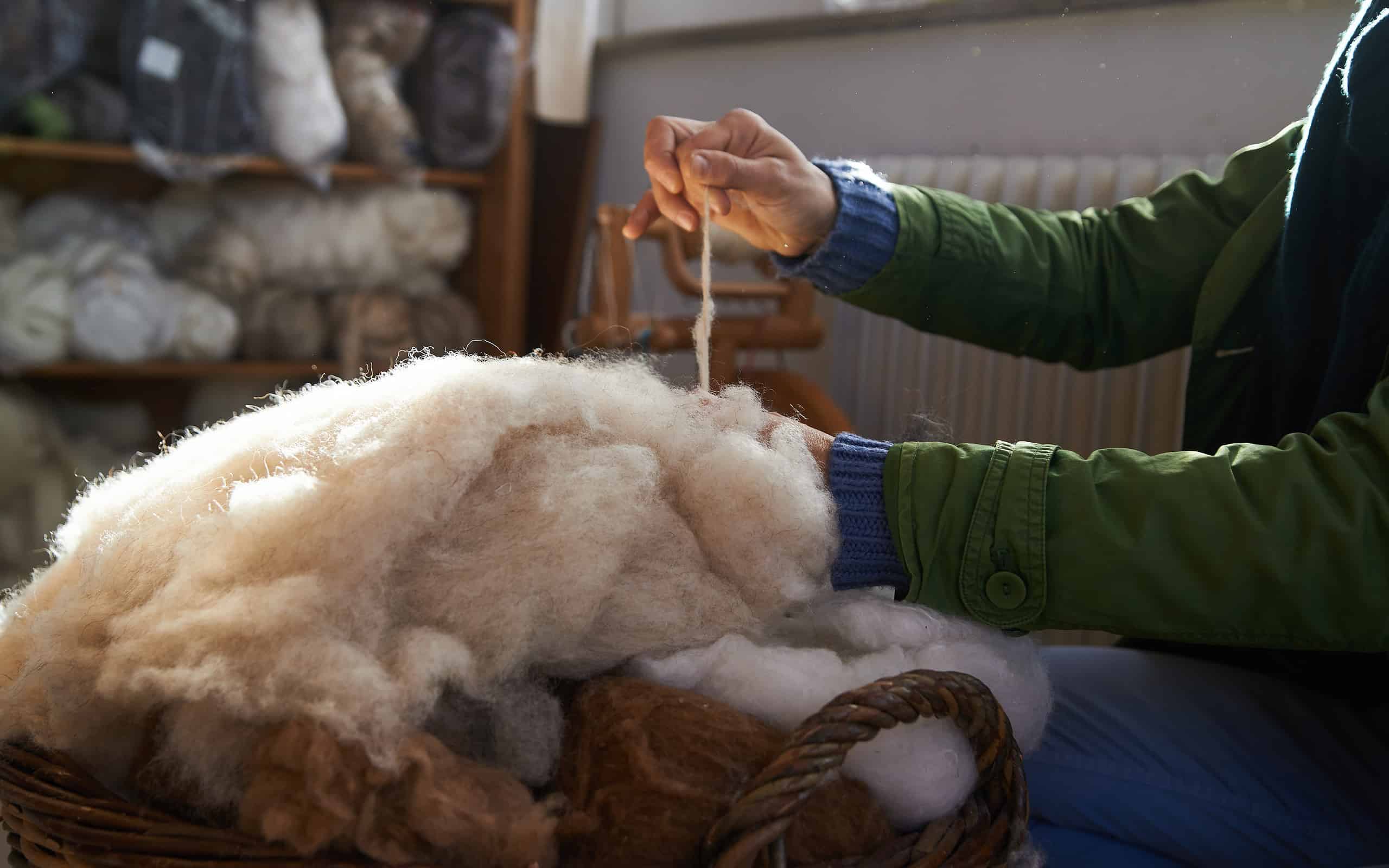Incredibly strong and yet oh-so-soft, wool has been our go-to material for centuries. Even today people all over the world continue to use it to create all kinds of amazing things. In addition, wool is biodegradable and recyclable, with a versatility and range that is nearly impossible to match. From high-end clothing and blankets to insulation, firefighting gear, carpets, rugs, and fine yarn, wool never goes out of style. But have you ever wondered where wool comes from? Or which countries produce the most wool? Let’s take a closer look at the top 10 wool-producing countries and what types of wool they produce!
What Is Wool and Where Does It Come from?
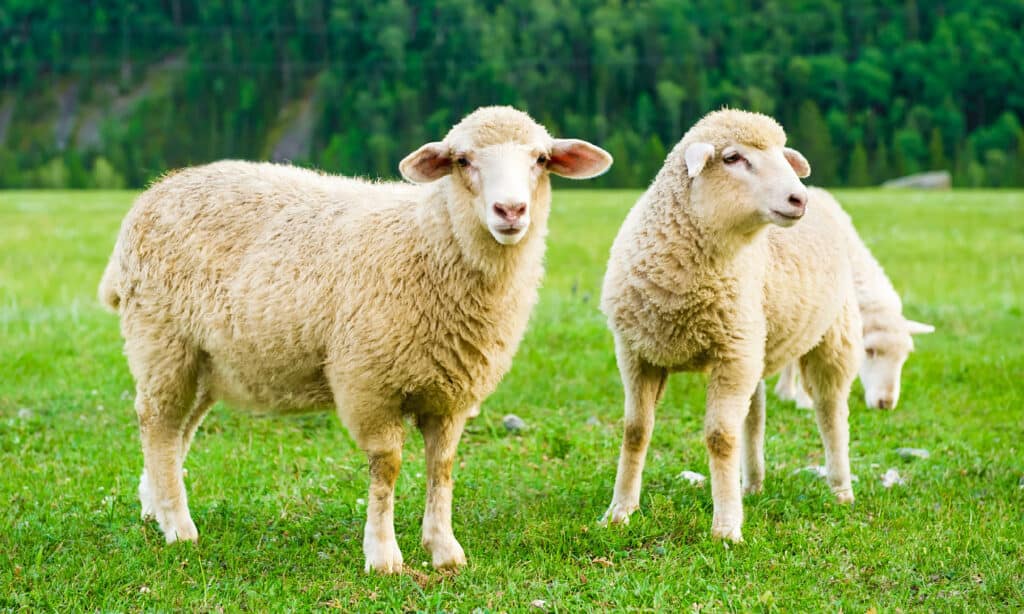
Sheep produce much of the world’s high-quality wool.
©iStock.com/idal
Wool is a remarkable natural fiber that comes from the fleece of animals like sheep, camels, goats, and alpacas. It is made of a unique composition of keratin — the same protein that forms the building blocks of human hair and nails. What sets wool apart from other natural fibers, however, is its distinctive crimped structure. This gives it an unrivaled elasticity and resilience. Wool also maintains incredible warmth, breathability, and moisture-wicking properties.
Wooly animals naturally shed their wool coats or undergo an annual shearing, usually during spring or summer. In sheep, for example, the entire fleece is meticulously removed, cleaned, and carefully sorted. Only the finest fibers are selected for the production of yarn, ensuring top-notch quality.
Wool is generally much more expensive than cotton or other synthetic fibers. However, this higher price tag reflects the artistry, skill, and resources that go into wool production, as well as its premium qualities that make wool stand out. Wool is a unique and fabulous combination of both luxury and superior functionality.
Now, let’s delve deeper into the countries that produce the most wool and see just how much they yield each year!
1. China (Mainland)
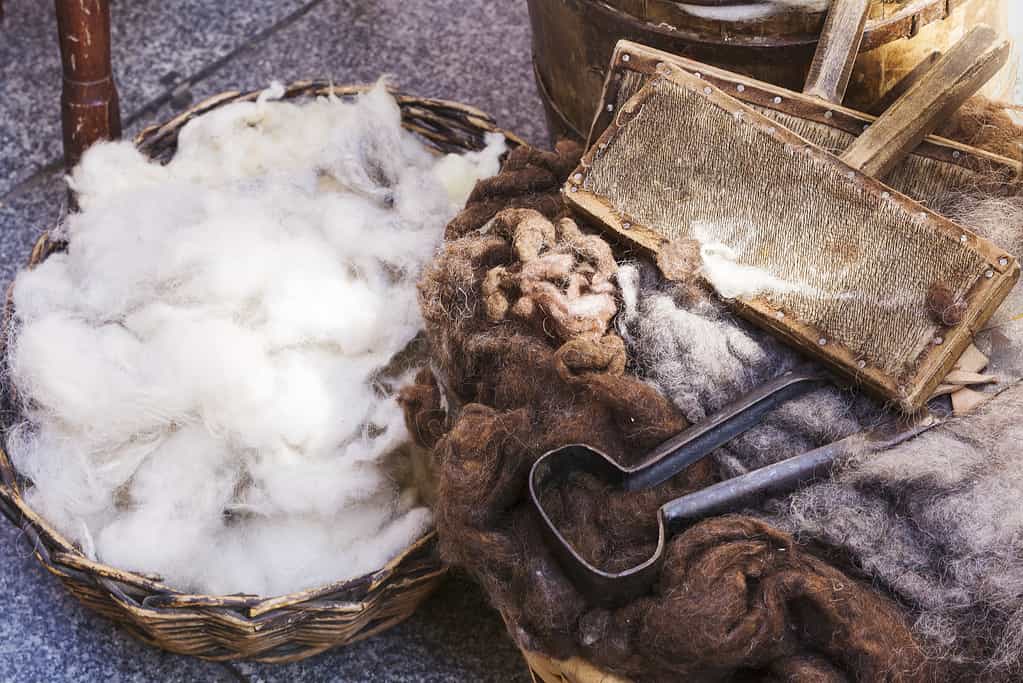
As of 2021, China is the top wool-producing country in the world.
©LuismiCSS/iStock via Getty Images
For the past several years, Australia has been the number one country that produces the most wool. However, recently China has been continually increasing its wool production and has now surpassed Australia when it comes to producing wool. According to the Food and Agriculture Organization of the United Nations Corporate Statistical Database (FAOSTAT), China produced 356,216 tons of wool in 2021, which is almost 20% of the world’s wool!
China also has a large textile industry that turns wool into all sorts of things, like fabric, yarn, clothes, and carpets. In fact, in 2021, China imported a whopping 2.5 billion dollars worth of wool, making it the world’s top wool importer. China imports wool from countries like Australia, South Africa, New Zealand, Uruguay, and Argentina. However, Australian wool, known for being extremely high quality and easier to find, is still the top choice for many people.
2. Australia
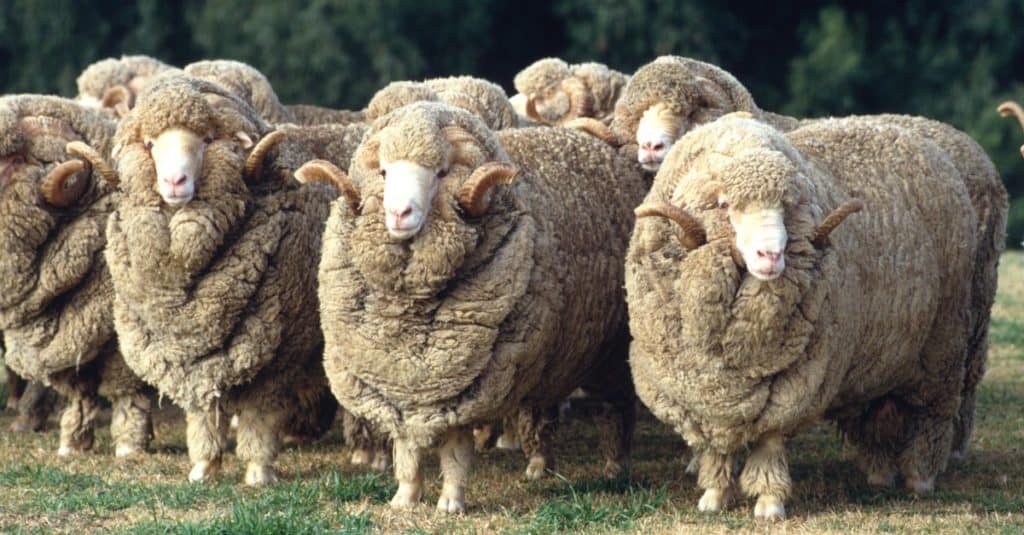
One of the softest and finest wools in the entire world comes from the Australian Merino sheep.
©John Carnemolla/Shutterstock.com
Following closely behind China, Australia stands as the second-highest wool-producing country in the world. For several years, in fact, Australia has held the prestigious title of being the foremost producer of wool, consistently surpassing an annual production of 300,000 tons. Most recently, Australia produced 348,68 tons of wool in 2021.
One of the reasons that Australia is such a top player when it comes to wool production is the country’s climate, which is perfect for raising Australian Merino sheep! Merino sheep can produce large quantities of very fine wool. Australian Merino wool in particular can even be finer than cashmere, giving it a silky smooth feel. Many countries focus on thicker wool for upholstery, carpets, and other furnishings, but Australia’s Merino wool produces 90% of the world’s supply of posh apparel. That means that if you own any piece of clothing made with wool, there’s a pretty good chance it came from one of the 70 million sheep living in Australia!
3. New Zealand
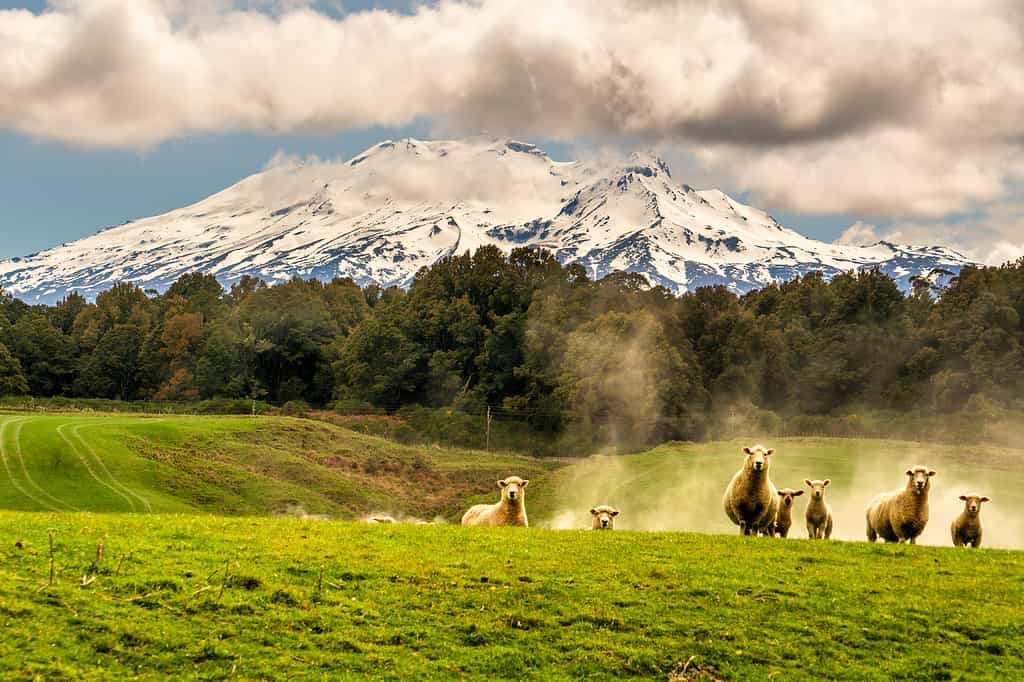
In 2021, New Zealand produced 125,772.17 tons of wool.
©Stewart Watson/iStock via Getty Images
The third largest producer of wool in the world is New Zealand. In fact, sheep farming has been the backbone of the country’s economy for many years, and sheep are an important symbol of the country. New Zealand has the perfect setup for sheep farming. It has a pristine climate, fresh air, clean water, tons of grass, and tons of highly dedicated farmers.
The wool produced in New Zealand is noticeably thicker and coarser than in Australia because of the country’s climate and topography. Farmers have crossbred sheep over the past few hundred years specifically for New Zealand’s unique conditions. The Corriedale, for example, was a cross between a Merino and several English sheep breeds. The New Zealand Romney makes up about two-thirds of the national flock. Drysdale wool is mostly used in carpets, and Perendale and Coopworth sheep are raised for both meat and wool.
4. Turkey
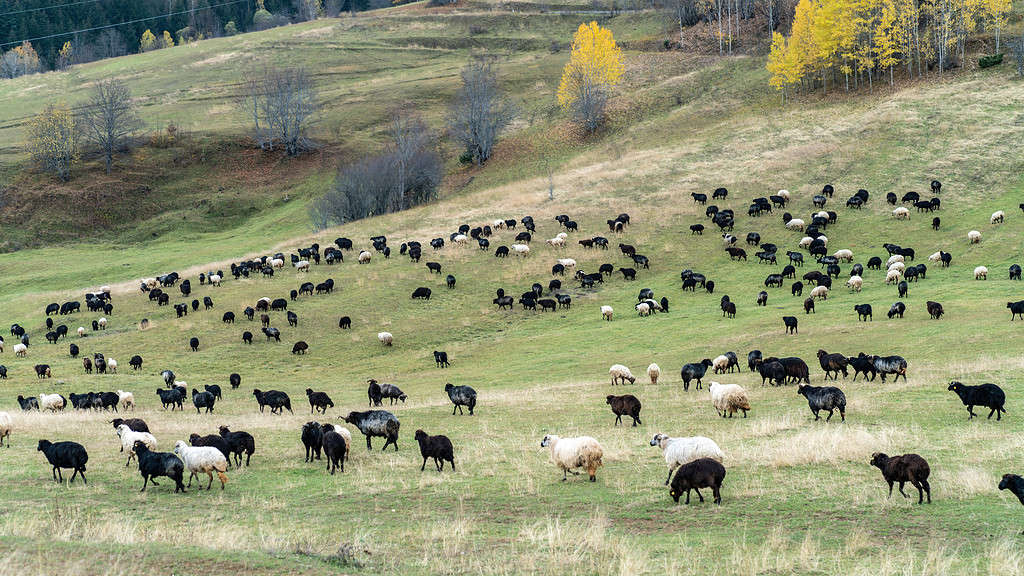
Karakul sheep are one of the oldest breeds and have a unique, dark-colored fleece.
©CanY71/iStock via Getty Images
Producing 85,916 tons of wool in 2021, Turkey is the fourth-highest wool producer in the world. Not only is Turkey a significant producer and supplier of wool, but it also boasts a renowned reputation for its superior quality textiles. If you’ve ever laid your hands on a Turkish-made clothing product, you’ll understand Turkish wool’s incredible quality and expertise! The country has mastered the art of creating clothing with finesse, precision, and expert craftsmanship when it comes to wool garments.
There are an estimated 30 million sheep in Turkey, the majority of which are native Akaraman sheep. In addition, there are also large populations of Merino and Karakul. All three breeds produce exceptional high-quality and versatile wool. Turkish wool is used to make all sorts of amazing products, from gorgeous carpets to silky soft clothing.
5. United Kingdom of Great Britain and Northern Ireland
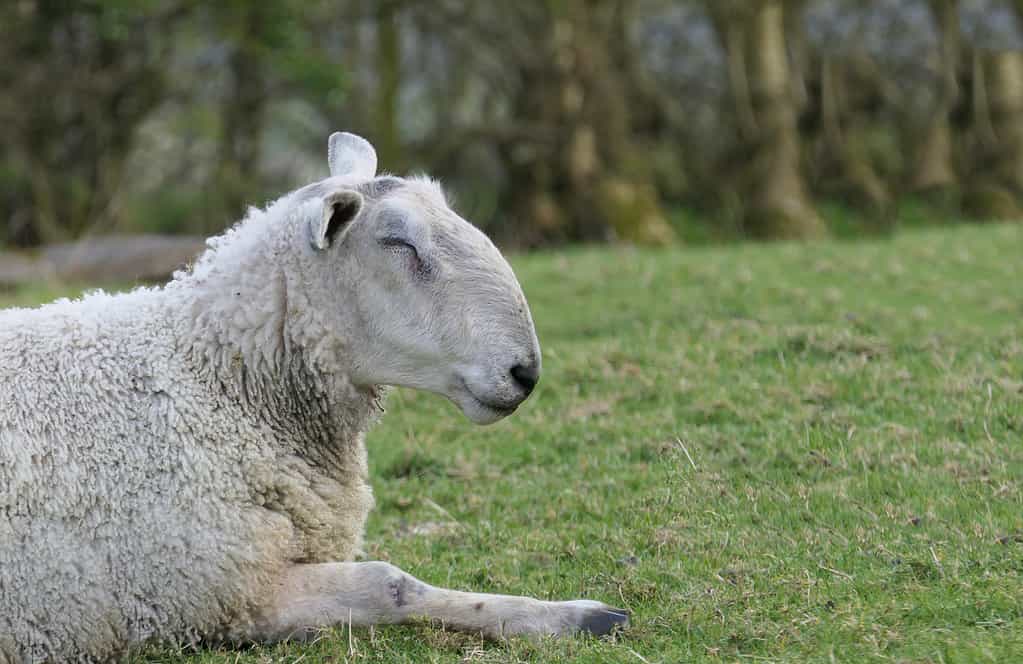
Bluefaced Leicester sheep produce the finest quality wool in the United Kingdom.
©Ballygally View Images/iStock via Getty Images
Wool production in the United Kingdom has a very rich history that dates back to the ancient Romans! Currently, the country yields around 70,000 tons of wool each year. Renowned for its strength, British wool has a high micron count. This makes it particularly well-suited for interior textiles like upholstery fabrics, rugs, and carpets. However, it is also commonly used in tweed fabric and men’s suits. The diverse array of British wool comes from nearly 25 different breeds of sheep.
Thousands of sheep farmers across the United Kingdom care for at least 25 different sheep breeds. However, the type of wool produced depends not only on the breed but also where it lives. Northern and Scottish breeds typically produce coarser yarn, while lowland breeds in Devon and Dorset produce softer wool. On the other hand, Welsh mountain sheep develop a robust and durable fleece due to the harsh weather conditions of their environment.
6. Morocco
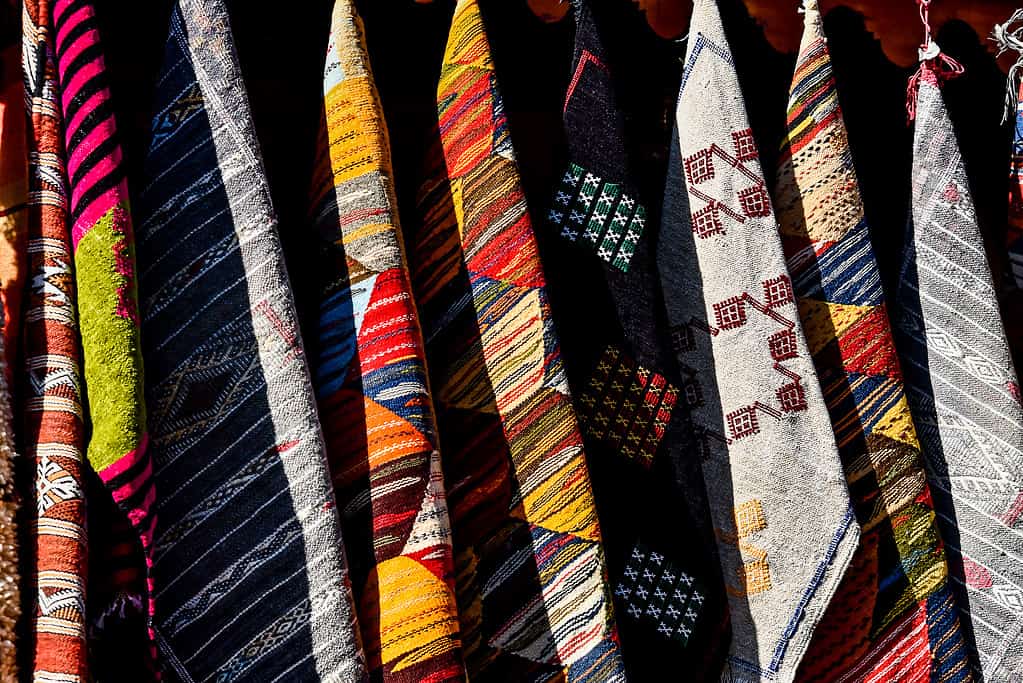
Moroccan wool is commonly used to make beautiful and vibrant rugs.
©underworld111/iStock via Getty Images
Boasting a rich tapestry of geography and climates, Morocco produces an astounding variety of wool types, with a yield of 62,670.16 tons of wool in 2021. Despite its abundant wool resources, Morocco ranks lower on the global wool export list. That is because the majority of this precious fiber is predominantly consumed within the country itself.
Native sheep breeds in Morocco make up 99% of the country’s sheep population. Beni Guil sheep, for example, live in the Eastern plateaus where they roam around in large herds and eat plants from the land. D’man sheep, on the other hand, live in the palm groves of the country’s southeastern regions. In the western plateaus, you’ll find big and strong Sardi sheep, while Timahdite sheep are tough enough to survive with very little human assistance in mountainous areas. Ouled Jellal sheep (or Algerian Arab sheep) aren’t native to Morocco, but they have been farmed in the eastern regions of the country for a long time and are well-adapted to a nomadic lifestyle.
7. Iran (Islamic Republic of)

For hundreds of years, stunning wool rugs, carpets, and clothing from Persia and Iran have been revered all over the world.
©Greentellect_Studio/iStock via Getty Images
Textile production in Iran has a rich and storied history dating back to the tenth millennium BCE. The craftsmanship of Persia’s weavers has long been revered, with many considering their creations to be true masterworks. Today, Iran produces over 50,000 tons of wool, with the majority used for the country’s handmade carpets. In fact, handmade carpets in Iran rank second only to the beloved pistachio as the country’s most significant non-oil export items!
The country boasts an impressive 102 commercial wool-spinning mills, collectively producing a staggering 24,000 tons of wool yarn annually. Iran is also one of the leading cashmere wool producers in the world with a large population of goats. In fact, out of the approximately 8,000 tons of cashmere produced globally, Iran contributes around 1,500 tons.
8. Russian Federation
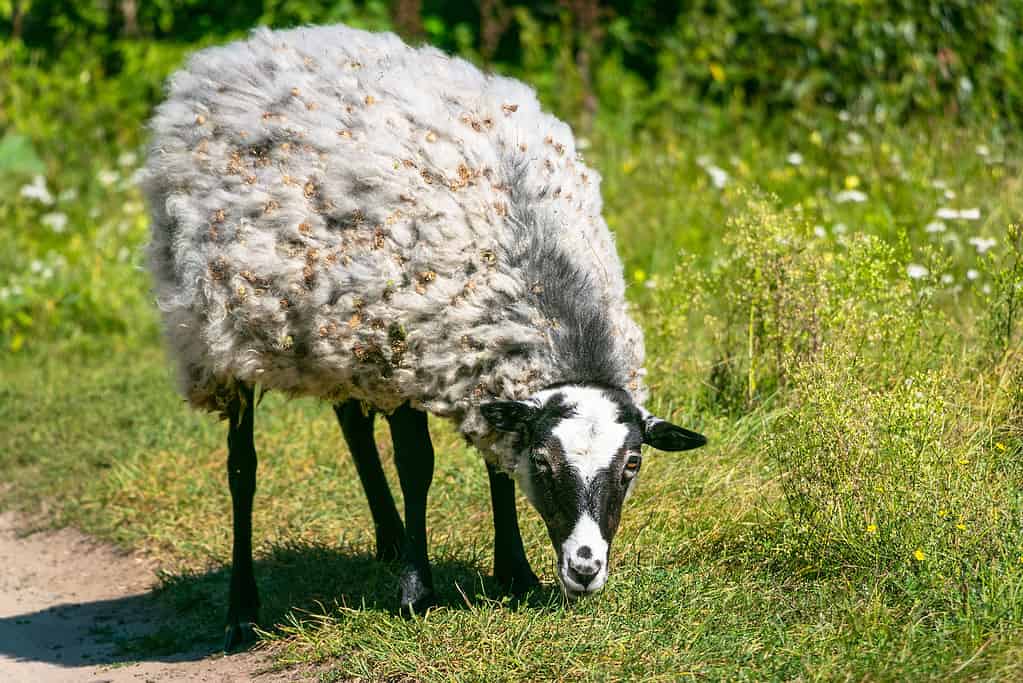
Romanov sheep are well-adapted to the cold climate of Russia.
©Wirestock/iStock via Getty Images
Sheep breeding has always played a vital role in Russia, a country that produces around 50,000 tons of wool each year. For a long time, Russia ranked alongside Australia, China, and New Zealand as a world leader in wool sheep production. However, economic reforms in the early 1990s led to a decline in Russia’s sheep population, and wool was in less demand globally. Recently sheep breeding in Russia has been shifting towards meat production rather than wool.
There are many different sheep breeds in Russia that produce wool. For example, Edilbai and Kalmyk are fat-rumped breeds that live in the hot and dry steppe regions in the southern part of Russia. The Trans-Baikal area, with its harsh continental climate, is home to the resilient short-fat-tailed Tuva sheep, which have adapted to survive in this unforgiving environment. Andean and Lezgin sheep live in the mountainous areas of the North Caucasus where forage resources can be scarce, while Romanov sheep live in Central Russia.
9. South Africa

Merino sheep are the most popular breed in the Cape Province of South
Africa
.
©ZambeziShark/iStock via Getty Images
In 1789 the first Merino sheep arrived at the Cape, beginning the commercialization of sheep farming and wool production in South Africa. Throughout the colonial period, the Cape Province became one of the foremost wool-producing regions in Southern Africa, and the sheep industry continued to expand rapidly in almost every corner of the country. In fact, the term “Cape wool” has become the universal term for all wool produced within the subcontinent.
South Africa is home to around 15 million wool sheep. About four million of these are owned by emerging and communal sectors. In 2021, South Africa produced 42,406.34 tons of wool. Much of it is exported to countries like China, Italy, the Czech Republic, Bulgaria, Germany, and France. The most common wooly sheep in South Africa are purebred Merino. Other Merino strains are also common, like the South African mutton Merino, the Dohne Merino, and the Letelle.
10. Pakistan
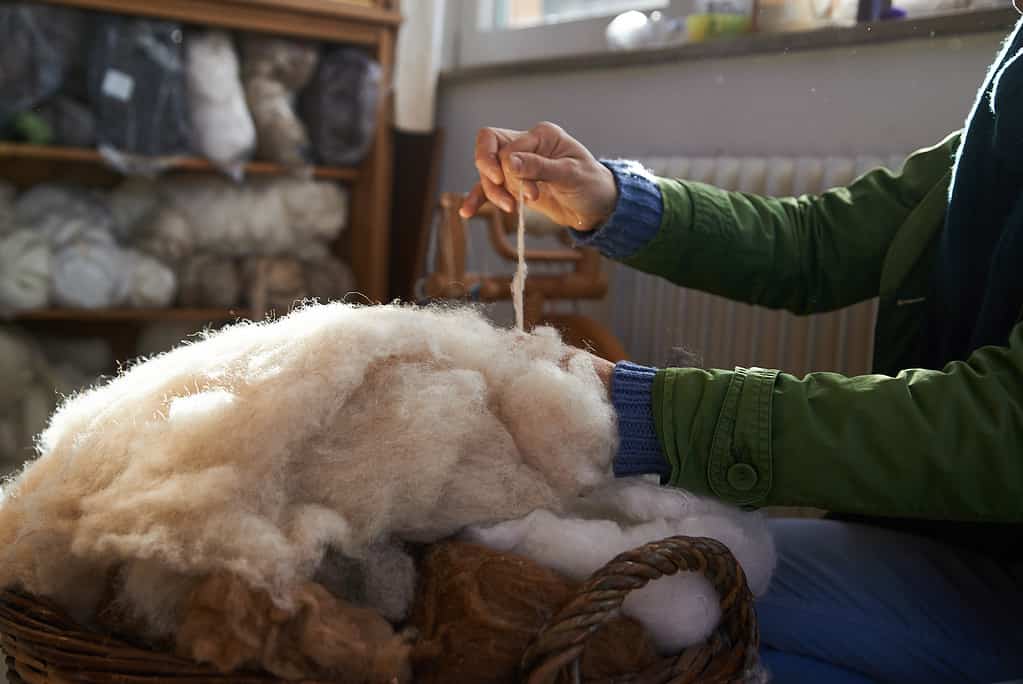
Small family-owned farms make up the majority of sheep farming in Pakistan.
©Gavayec/iStock via Getty Images
Another impressive wool powerhouse is Pakistan, which produced 43,4328.18 tons of wool in 2021. Sheep farming and wool production have been an important part of the country for thousands of years, particularly in Pakistan’s mountainous regions where raw materials are commonly spun and made into warm clothing. Today, Pakistan’s wool is mainly used for acrylic yarn, woolen yarn, shawls, blankets, fabrics, and carpets.
Smallholder families are the main players in goat and sheep production in Pakistan, with at least 25 different breeds of sheep in the country. Kajli sheep breeds, for example, have glossy white wool, while Lati or salt range sheep are raised for their wool and meat. The Kaghani sheep from Punjab and Sindh have super soft and lustrous wool, and they also produce quite a bit of milk. Balochi sheep have pristine white fur, while Lohi sheep have a unique reddish-brown fur that produces high-quality wool. Merino sheep are very popular in Pakistan as well.
Which Country Produces the Best Wool?
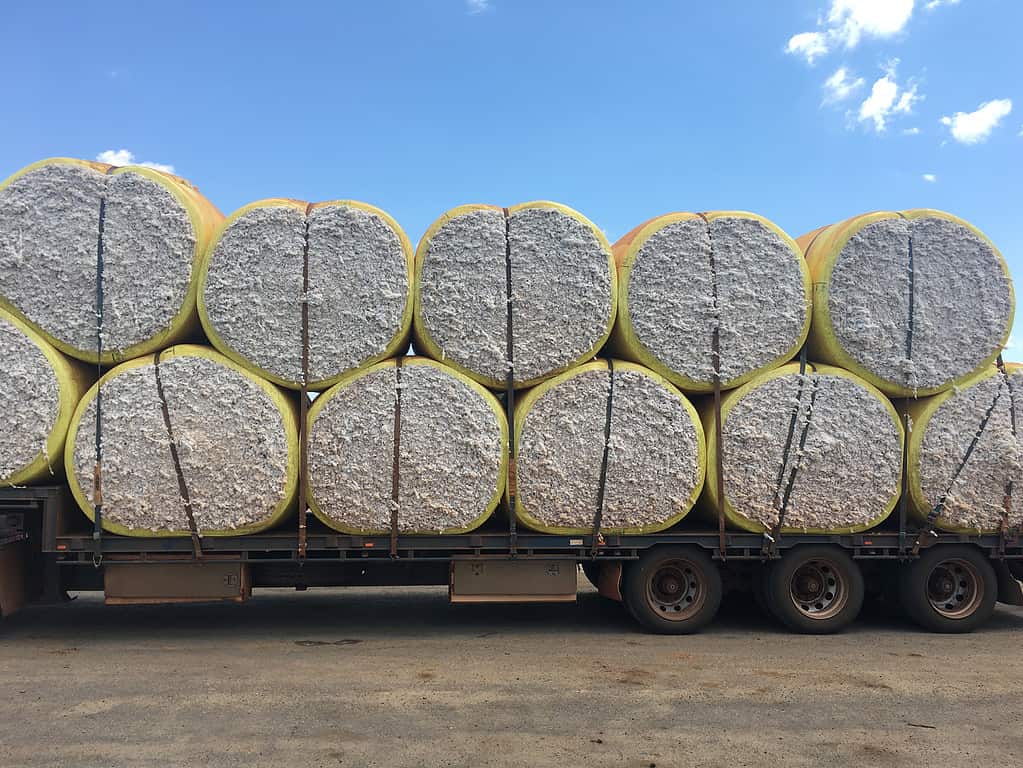
Australia is the largest exporter of wool in the world.
©chameleonseye/iStock via Getty Images
When it comes to the production of high-quality wool, many countries stand out for their unique characteristics and well-crafted products. However, one country in particular is widely recognized as the unrivaled leader when it comes to producing the best wool: Australia. With its ideal climate, abundant land, and a long-standing reputation as a major player in the industry, Australian Merino wool stands out as the finest and softest wool available worldwide.
How Does the United States Compare?
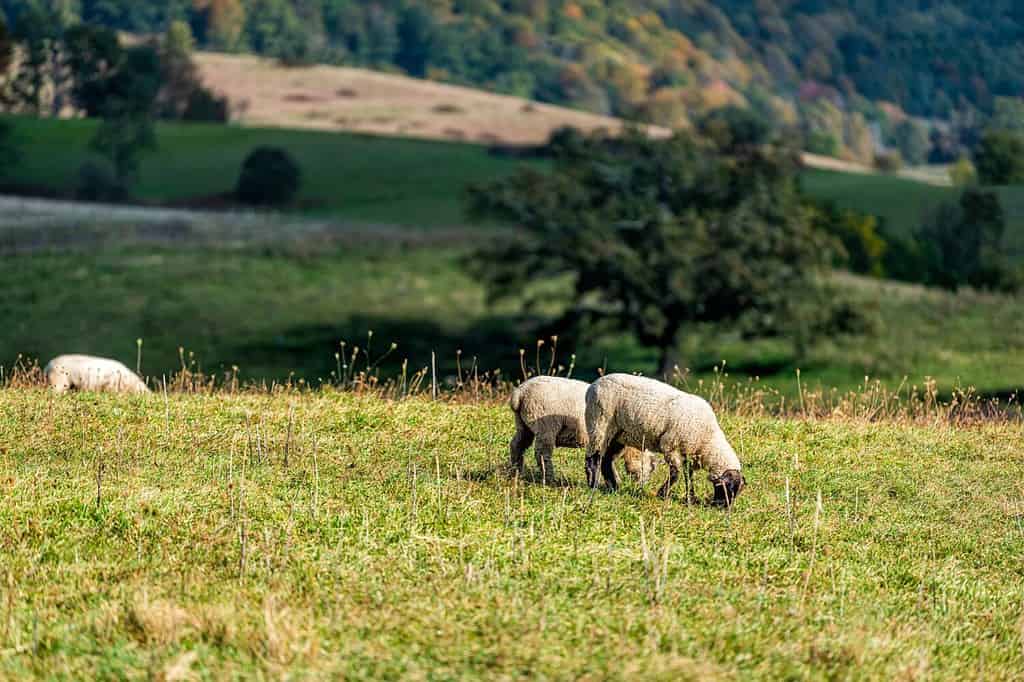
The majority of sheep farming in the U.S. is in the western and central states.
©Kristi Blokhin/Shutterstock.com
While the United States may not be a major player in wool production, it certainly holds its own in the industry. In 2021, the U.S. produced an impressive 10,184 tons of wool, which came from a few stand-out animals. One notable breed is the Rambouillet, also known as the French Merino. Developed from the Spanish Merino in France and Germany, this breed serves as the foundation for many western U.S. range flocks. It is renowned for its high-quality, fine-wool fleece.
Another noteworthy breed in the United States is the Columbia. This breed was actually the first to be developed in the country. It is the result of a cross between the Lincoln and Rambouillet. The Columbia sheep yields medium wool fleeces with good staple length, making it a reliable source for heavy, quality wool. In addition, the Raghee is another prominent breed in the U.S., most commonly found in the intermountain and northern states. These sheep excel in producing market lambs of excellent quality while also yielding a heavy, medium-wool fleece with a good staple length.
Summary of the 10 Countries That Produce the Most Wool
| Rank | Country | Wool produced in 2019 | Wool produced in 2020 | Wool produced in 2021 |
|---|---|---|---|---|
| #1 | China | 341120.16 tons | 333,624 tons | 356,216 tons |
| #2 | Australia | 328,608 tons | 283,794 tons | 348,608 tons |
| #3 | New Zealand | 139,622.06 tons | 133,836.31 tons | 125,772.17 tons |
| #4 | Turkey | 70,587 tons | 79,754 tons | 79,754 tons |
| #5 | United Kingdom of Great Britain and Northern Ireland | 69,621.16 tons | 70,021.3 tons | 70,447.56 tons |
| #6 | Morocco | 60,606.21 tons | 61,342.17 tons | 62,670.16 tons |
| #7 | Iran (Islamic Republic of) | 56,050.47 tons | 54,703.47 tons | 52,504.36 tons |
| #8 | Russian Federation | 50,211 tons | 51,660 tons | 47,838 tons |
| #9 | South Africa | 44,683.34 tons | 43,216.73 tons | 42,406.34 tons |
| #10 | Pakistan | 43,538.23 tons | 43,448.62 tons | 43,328.18 tons |
Thank you for reading! Have some feedback for us? Contact the AZ Animals editorial team.

